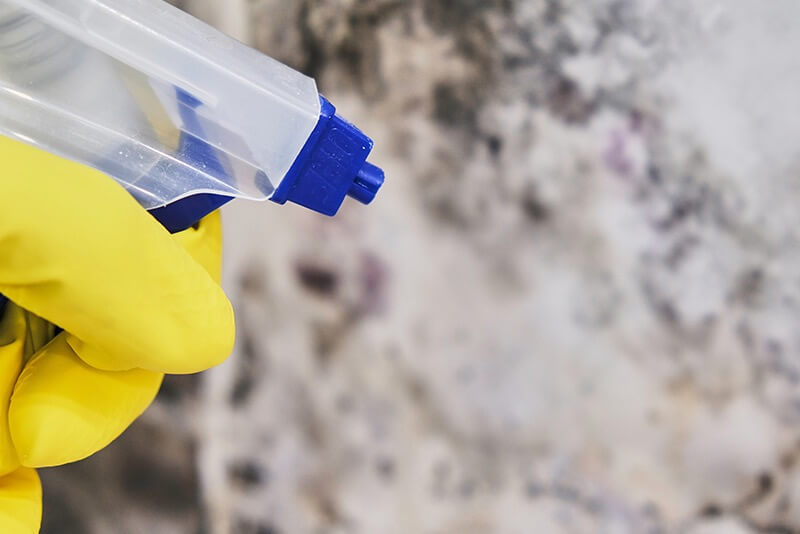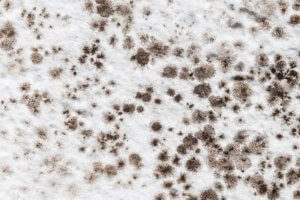BLOG

Handy Guide To Mould Removal & Clean Up
Most people are all too familiar with the experience of coming across, and having to clean up unsightly mould growth in homes and living spaces. It is for this reason that mould removal and clean up often becomes an important and necessary part of people’s regular house cleaning and maintenance routines.
And while many of us don’t hesitate to clean up mould once we spot it in our homes, we often don’t consider what mould actually is, nor how it can have a negative impact on our general health and wellbeing.
So how should mould removal and clean up be handled and when is the right time to call a professional biohazard cleaner to take care of it instead? Read our handy mould removal guide below for more information.
What Is Mould?

Mould is a naturally occurring, living organism belonging to the fungi family. Unlike other plant based organisms, mould can’t produce its own food source unlike other plants, and instead breaks down and digests nutrients from other organic sources such as plants and animals in order to thrive and grow.
Often found in warm places where there is moisture and organic material present, mould can often be found just about anywhere, including inside people’s homes.
How Does Mould Grow?
Mould reproduces and sprouts by releasing microscopic spores which are then spread through the air and by water. These released spores are initially inactive, but when certain conditions are created such as when ambient humidity is high combined with poor ventilation and a lack of light, mould is given the perfect environment where it can grow and spread.
Places To Check For Mould Growth
In people’s homes, there are certain areas that are more susceptible to providing the perfect conditions for mould to thrive. These locations tend to be wet areas that don’t get enough ventilation where moisture can accumulate. While mould can generally occur both indoors and outdoors, there are certain measures that can be taken to prevent and clean up mould to control its spread and growth.
Common places to check and treat mould growth in homes include the following areas:
- Walls
- Floors
- Ceilings
- Bathroom and kitchen tiled areas
- Showers and toilets
- Sinks
- Near the refrigerator and pantry
- Windows and window sills
- Air conditioning and heating vents
- Garages and storage spaces
- Laundry areas near washing machines and dryers
Why Should You Get Rid Of Mould

Exposure to mould spores can cause a variety of health problems – particularly for those with asthma and allergies, which is why it’s important to clean up and remove mould as soon as it’s spotted to prevent further growth. Mould can also cause chronic lung disease and autoimmune disease which is why it’s important to clean and remove in the first instance.
How To Clean & Remove Mould At Home

Cleaning up and removing small amounts of mould at home is a fairly easy and straightforward process as follows:
1. Control moisture – because mould tends to grow in damp, unventilated spaces, the easiest way to get mould growth under control is to identify where the source of the moisture is coming from and remove it. Look for signs of visible mould spots on surfaces such as ceilings and walls. When trying to locate non-visible mould, keep an eye out for musty smells – an indicator that mould is present.
Be sure to inspect potential roofing leaks and around plumbing as damaged pipes and drains can often be a source of moisture and dampness.
To reduce the chance of mould regrowth, be sure to dry the area where the mould has grown thoroughly.
2. Clean and remove the mould – dispose of any mouldy items that cannot be cleaned or that have been mouldy for several weeks such as fabric seats, mattresses and bedding.
Clean all affected hard surfaces with a microfibre cloth or scrubbing sponge dipped in detergent or white vinegar. Be sure to rinse the microfibre cloth or sponge in between wipes in a separate small bowl filled with clean water.
Be sure to avoid combining various cleaning chemicals and detergents together as this can release hazardous fumes which can have a negative impact on your health.
3. Prevent mould growth – once the mould has been cleaned up and removed, there are several things that can be done to prevent any future growth. Ventilate the space by opening windows and running ceiling fans to get the airflow moving whenever possible. You can also reduce the chances of mould regrowth by increasing the amount of sunlight coming into the space by opening up curtains and cleaning at home on a regular basis.
Mould Removal – When To Call The Professionals
There are certain situations when mould clean up and removal should be handled by professional cleaners as opposed to performing a DIY clean up. If you have surfaces in your home where there is a large amount of mould growth, this task should be best left to the professionals to ensure it is done safely and effectively in order to prevent mould from spreading into other areas.
For all your professional mould removal and clean up needs, get in touch with the team at National Trauma (NTCSC). We offer cost-effective nationwide mould removal and remediation services. Call us anytime 24/7 and ask for an obligation free quote today.

